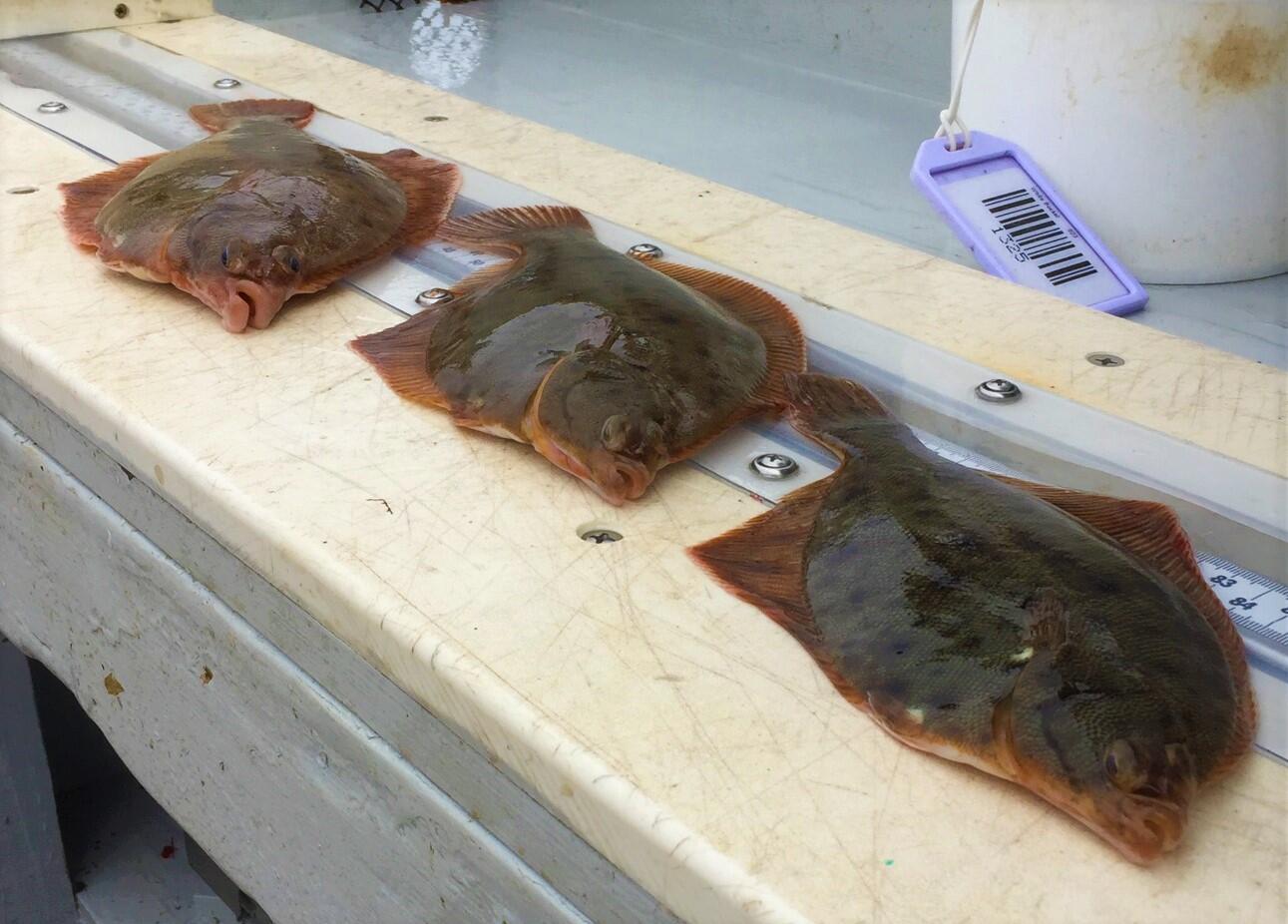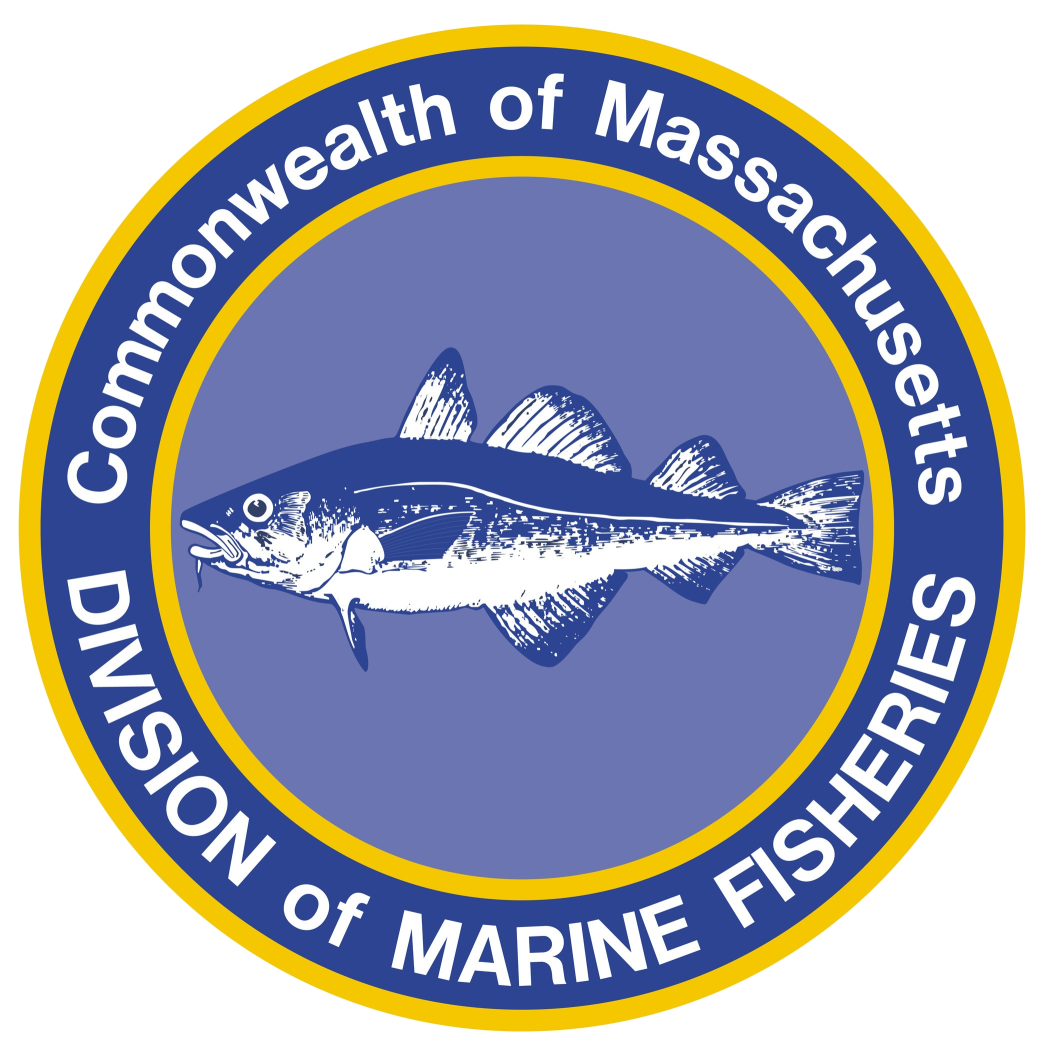- Division of Marine Fisheries

New DMF research into winter flounder spawning habitat using advanced DNA technology is expected to aid in the future refinement of spawning closures and time-of-year restrictions on dredging and other projects.
Winter flounder (Pseudopleuronectes americanus) is a commercially and recreationally important flatfish species that is ubiquitous in Massachusetts coastal waters but whose abundance has declined in recent decades. Winter flounder enter Massachusetts embayments to spawn during winter and early spring when they are vulnerable to potential anthropogenic impacts associated with nearshore habitats. Because turbidity and burial can cause mortality to demersal eggs, DMF’s Habitat Program typically recommends time of year (TOY) restrictions on dredging projects in Massachusetts embayments during the spawning and larval development periods. However, detailed information regarding the timing and location of spawning within embayments is currently lacking. To maintain a precautionary approach, DMF applies winter flounder TOY spawning recommendations generally across all embayment locations and over a broad timescale (January 15 to May 31 across southern Massachusetts, February 1 to June 30 for Cape Cod Bay, and February 15 to June 30 for the north coast of Massachusetts). This broad TOY period combined with user conflicts during summer months generally restricts the dredging window to the fall and early winter. Dredging outside of this TOY period is often not feasible or practical and many dredge projects seek waivers to work within TOY restriction periods. Determining the impacts of work within TOY periods on winter flounder spawning success is limited by our current lack of detailed knowledge of preferred spawning habitat and behavior.
We are partnering with the Gloucester Marine Genomics Institute (GMGI) to initiate an environmental DNA (eDNA)-based study of winter flounder distribution in southern MA embayments to address existing data gaps relevant to TOY restriction policies. eDNA is genetic material from an organism that enters the aquatic environment (e.g., metabolic waste, shed cells, mucus) that can be used to identify a species of interest without physically sampling it. Field sampling for eDNA is simple, inexpensive, and consequently holds the potential to provide detailed temporal and spatial coverage information. Water samples are collected in the field and genetic material is later condensed onto a filter and frozen.
For our study which is focused on a single species, DNA is extracted from the filter and quantitative polymerase chain reaction (qPCR) analysis is used to detect the presence of winter flounder using primers and probes designed specifically for the detection of this target species.
The project commenced two years ago with the collection of water samples for eDNA analysis during two traditional winter flounder monitoring surveys: Rhode Island’s winter flounder fyke net survey and our winter flounder seine survey. This initial phase of sampling will provide important validation information as eDNA data from these collections can be compared directly to conventional estimates of winter flounder presence and abundance. These results will greatly aid in interpreting field eDNA results for the second phase of this project in which water samples will be collected from Cape Cod embayments where winter flounder presence and abundance are unknown. In this upcoming second phase, representative embayments on the north and south sides of Cape Cod will be sampled for eDNA for a full 12-month period starting in Summer 2021. Results will be used to assess the efficacy of an eDNA approach for temporal and spatial characterization of winter flounder embayment habitat.
By John Logan, Fisheries Biologist
